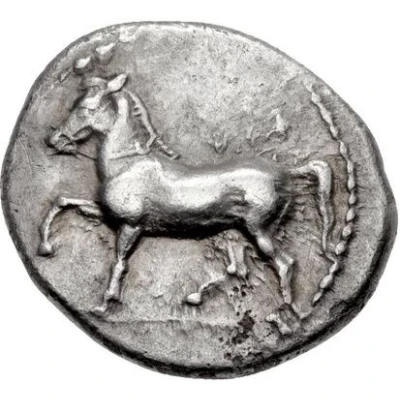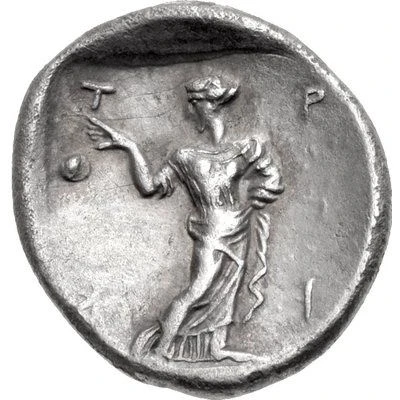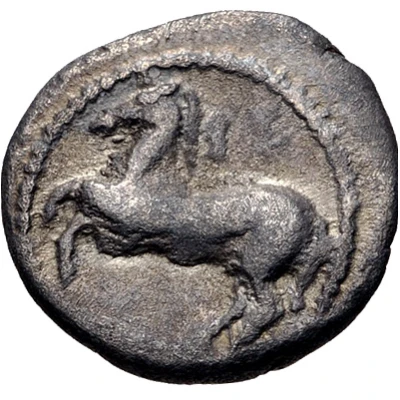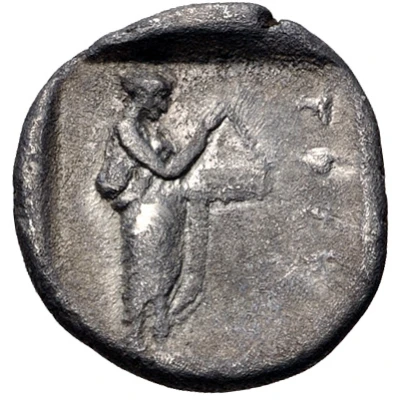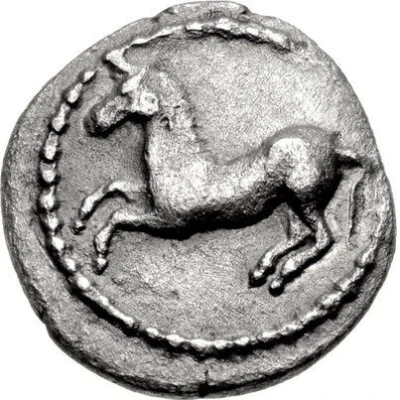
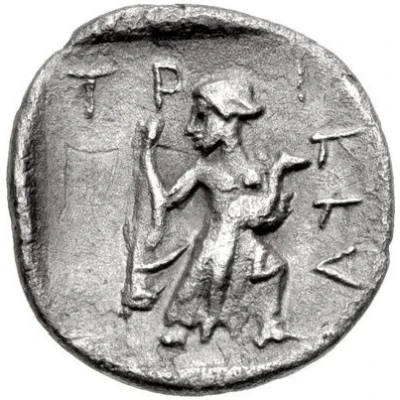

© Classical Numismatic Group, Inc.
Obol 440 BC - 400 BC
| Silver | 0.70 g | 11 mm |
| Issuer | Trikka (Thessaly) |
|---|---|
| Type | Standard circulation coin |
| Years | 440 BC - 400 BC |
| Value | Obol (⅙) |
| Currency | Drachm |
| Composition | Silver |
| Weight | 0.70 g |
| Diameter | 11 mm |
| Shape | Round (irregular) |
| Technique | Hammered |
| Demonetized | Yes |
| Updated | 2024-10-10 |
| Numista | N#396177 |
|---|---|
| Rarity index | 100% |
Reverse
TP-I above, KKA right down, the A upside down, female figure (Herkyna) in long chiton, advancing right, head turned to look behind her, she lifts the folds of her drapery with her right and with her left holds a goose close to her body, the head of the bird looking right, in field left, graffiti Π; all in shallow incuse square.
Script: Greek
Lettering:
TP-I
KKA
Interesting fact
The Obol coin was used as a form of currency in ancient Greece, specifically in the region of Thessaly, and was made of silver. The coin weighed 0.70 grams and had a distinctive design, featuring a helmeted head of Athena on one side and a horse on the other. The Obol was a standardized coin, meaning it was widely accepted and used throughout the region, and was a symbol of the wealth and power of the city-state of Trikka.
